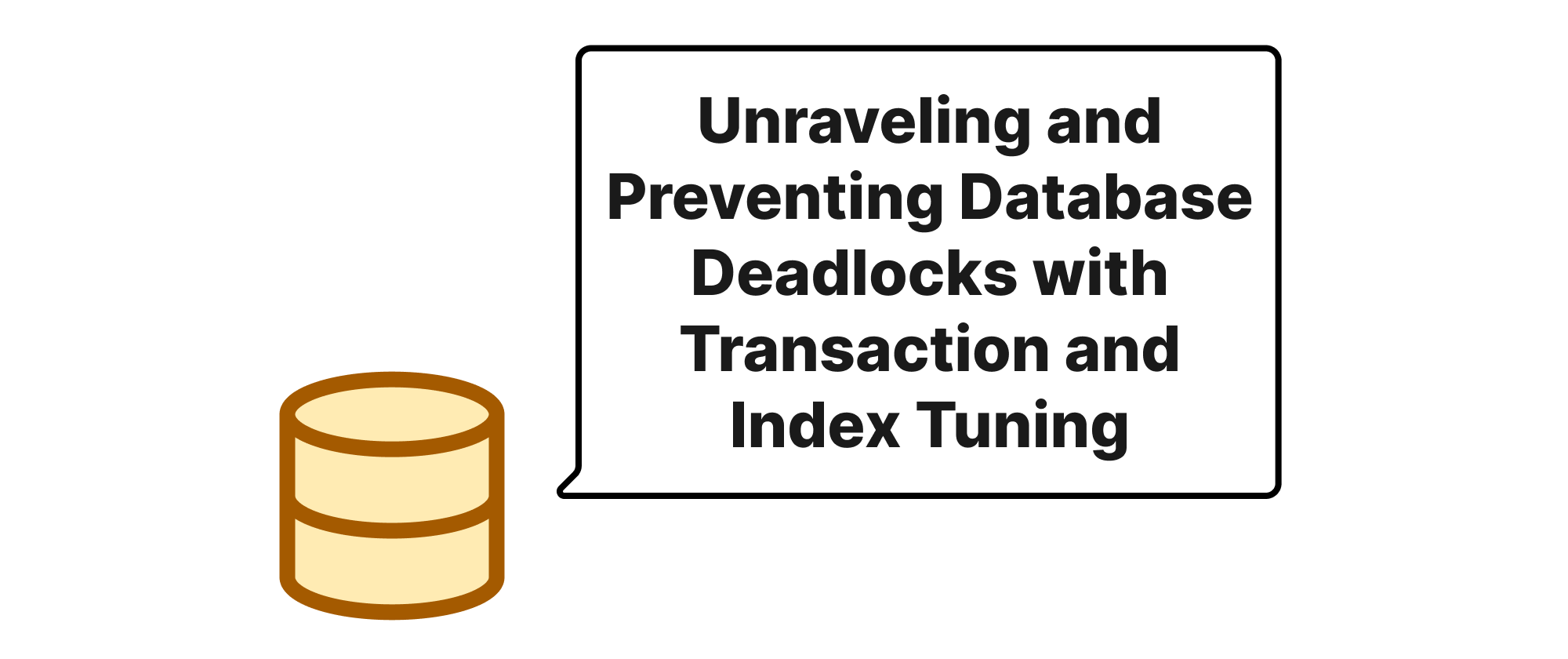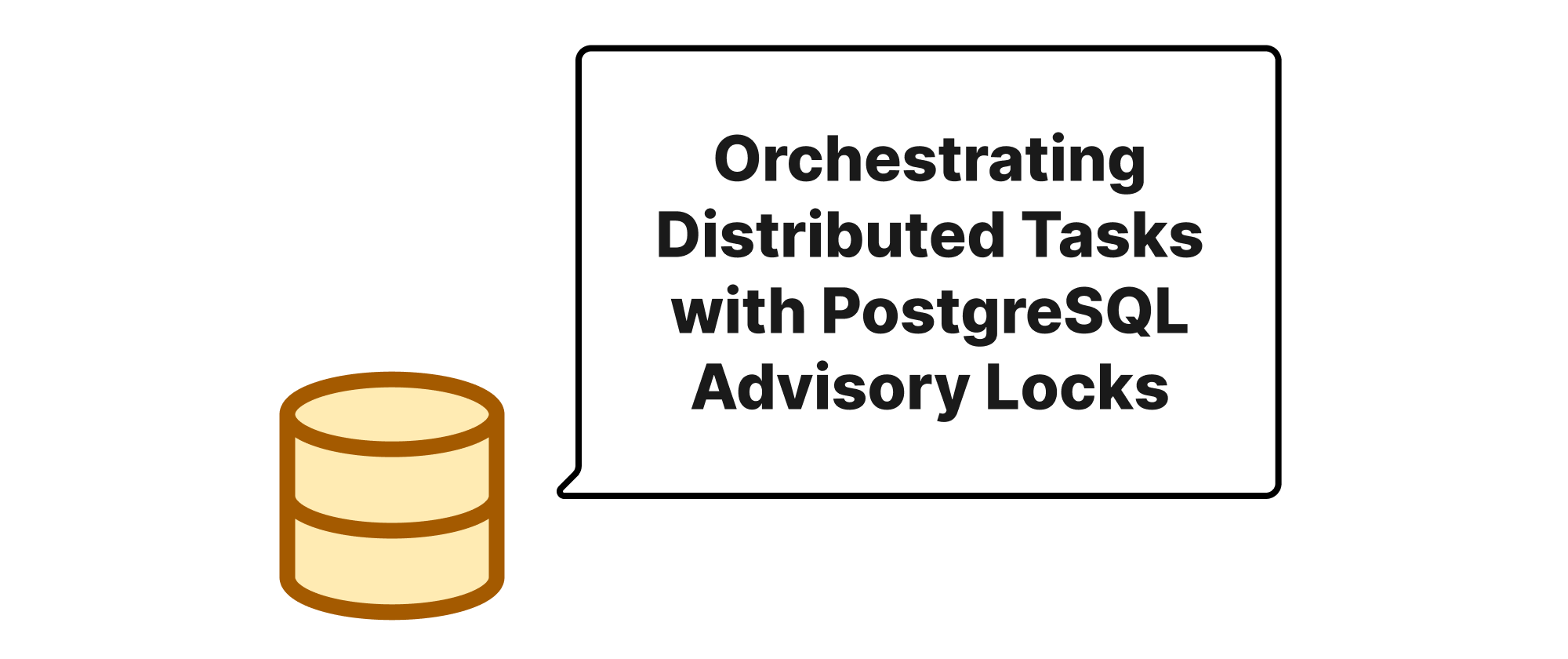Unraveling and Preventing Database Deadlocks with Transaction and Index Tuning
Grace Collins
Solutions Engineer · Leapcell

Introduction
In the intricate world of database management systems, ensuring seamless and concurrent access to data is paramount. However, a common adversary that can bring even the most robust systems to a grinding halt is the database deadlock. Deadlocks, often elusive and difficult to diagnose, represent a critical concurrency control issue where two or more transactions are perpetually waiting for each other to release resources, resulting in a standstill. Understanding the genesis and mechanics of deadlocks is not merely an academic exercise; it's a practical necessity for maintaining application responsiveness, data integrity, and overall system stability. This article will unravel a typical database deadlock scenario and, crucially, demonstrate how strategic adjustments to transaction design and index optimization can effectively mitigate and prevent these costly occurrences, paving the way for more efficient and reliable database operations.
Dissecting Deadlocks: Core Concepts and Prevention Strategies
Before diving into a specific deadlock scenario, let's establish a foundational understanding of key concepts that underpin deadlocks and their resolution.
Core Terminology
- Transaction: A logical unit of work that performs one or more database operations. Transactions are designed to be ACID compliant (Atomic, Consistent, Isolated, Durable) to ensure data integrity.
- Lock: A mechanism used to control concurrent access to data. When a transaction acquires a lock on a resource (e.g., a row, page, or table), other transactions are prevented from modifying it (shared locks allow reads, exclusive locks prevent all access).
- Resource: Any item that a transaction needs to access, such as a row, table, or even internal database structures.
- Deadlock: A state where two or more transactions are blocked indefinitely, each waiting for locks held by the other to be released. This forms a circular dependency in resource acquisition.
- Isolation Level: Determines the degree to which transactions are isolated from each other's uncommitted data. Higher isolation levels (e.g., Serializable) reduce concurrency but minimize anomalies, while lower levels (e.g., Read Committed) increase concurrency but potentially introduce issues like non-repeatable reads or phantom reads.
- Lock Escalation: The process by which a database system automatically converts a large number of fine-grained locks (e.g., row locks) into a coarser-grained lock (e.g., table lock). This reduces lock overhead but can increase contention and the likelihood of deadlocks.
- Deadlock Detector: A component within the database management system (DBMS) responsible for identifying deadlocks. Once detected, the DBMS typically chooses a "victim" transaction to roll back, freeing up resources and allowing other transactions to proceed.
A Typical Deadlock Scenario
Consider an e-commerce application with two tables: Products (with columns ProductID, ProductName, StockQuantity) and Orders (with columns OrderID, ProductID, QuantityOrdered).
Scenario: Two concurrent transactions, Transaction A and Transaction B, are attempting to update inventory and record an order.
Transaction A:
- BEGIN TRANSACTION;
- UPDATE Products SET StockQuantity = StockQuantity - 1 WHERE ProductID = 101; (Acquires exclusive lock on row for ProductID 101 in
Products) - INSERT INTO Orders (OrderID, ProductID, QuantityOrdered) VALUES (..., 101, 1); (Attempts to acquire exclusive lock on
Orderstable/page for insert)
Transaction B:
- BEGIN TRANSACTION;
- INSERT INTO Orders (OrderID, ProductID, QuantityOrdered) VALUES (..., 102, 1); (Acquires exclusive lock on
Orderstable/page for insert) - UPDATE Products SET StockQuantity = StockQuantity - 1 WHERE ProductID = 102; (Attempts to acquire exclusive lock on row for ProductID 102 in
Products)
The Deadlock:
- Transaction A holds a lock on
Products.ProductID = 101and needs a lock onOrders. - Transaction B holds a lock on
Ordersand needs a lock onProducts.ProductID = 102.
If Transaction A tries to insert into Orders at the same time Transaction B is inserting into Orders (or if they are inserting into the same page/table), they might both contend for a lock on Orders. Then, if Transaction A tries to update Products.ProductID = 101 while Transaction B tries to update Products.ProductID = 102, and they both happen to hold locks on the first resource they accessed while waiting for the second, a deadlock occurs. Specifically, if Orders table insertion is page-level locked or table-level locked, or requires a lock on the Orders clustered index page that is contested.
Let's refine the scenario to involve more direct resource contention to make the deadlock more apparent:
Revised Deadlock Scenario: Two transactions updating inventory and order associated with two different products.
Transaction A (Order for Product 101):
- BEGIN TRANSACTION;
- UPDATE Products SET StockQuantity = StockQuantity - 1 WHERE ProductID = 101; (Acquires exclusive lock on row for ProductID 101)
- UPDATE Products SET StockQuantity = StockQuantity - 1 WHERE ProductID = 102; (Attempts to acquire exclusive lock on row for ProductID 102)
Transaction B (Order for Product 102):
- BEGIN TRANSACTION;
- UPDATE Products SET StockQuantity = StockQuantity - 1 WHERE ProductID = 102; (Acquires exclusive lock on row for ProductID 102)
- UPDATE Products SET StockQuantity = StockQuantity - 1 WHERE ProductID = 101; (Attempts to acquire exclusive lock on row for ProductID 101)
Deadlock Logic:
- Transaction A acquires lock on
Products.ProductID = 101. - Transaction B acquires lock on
Products.ProductID = 102. - Transaction A tries to acquire lock on
Products.ProductID = 102, but it's held by Transaction B. Transaction A waits. - Transaction B tries to acquire lock on
Products.ProductID = 101, but it's held by Transaction A. Transaction B waits.
Both transactions are now indefinitely blocked, waiting for the other to release the resource they need. The database's deadlock detector will eventually identify this and typically terminate one of the transactions (the victim) to resolve the deadlock.
Preventing Deadlocks through Transaction Adjustments
The core principle to prevent deadlocks is to break the circular wait condition.
-
Consistent Lock Ordering: The most effective method. Transactions should acquire locks on resources in a consistent, predefined order. If both Transaction A and Transaction B had updated Product 101 then Product 102, no deadlock would occur.
Example (Consistent Ordering for
Productsupdates):-- Transaction A BEGIN TRANSACTION; UPDATE Products SET StockQuantity = StockQuantity - 1 WHERE ProductID = 101; UPDATE Products SET StockQuantity = StockQuantity - 1 WHERE ProductID = 102; COMMIT; -- Transaction B BEGIN TRANSACTION; UPDATE Products SET StockQuantity = StockQuantity - 1 WHERE ProductID = 101; UPDATE Products SET StockQuantity = StockQuantity - 1 WHERE ProductID = 102; COMMIT;In this scenario, if Transaction A acquires the lock on
ProductID = 101first, Transaction B will have to wait forProductID = 101to be released before it can proceed to acquire locks onProductID = 102. This serializes access and prevents the circular wait. -
Short Transactions: Keep transactions as short as possible. The less time a transaction holds locks, the less likely it is to be involved in a deadlock. Avoid user interaction within transactions.
-
Lower Isolation Levels (with caution): Experimenting with lower isolation levels (e.g., Read Committed instead of Repeatable Read or Serializable) can reduce the scope and duration of locks, thereby increasing concurrency and potentially reducing deadlocks. However, this comes at the cost of allowing more concurrency anomalies, so thorough testing is crucial.
-
Use
SELECT FOR UPDATEorWITH (UPDLOCK): In some databases, explicitly acquiring an update lock on rows when reading them ensures that subsequent updates won't wait for a shared lock to be upgraded to an exclusive lock, which can sometimes be part of a deadlock chain.-- Example using SELECT FOR UPDATE (PostgreSQL/MySQL) BEGIN; SELECT StockQuantity FROM Products WHERE ProductID = 101 FOR UPDATE; -- Calculate new stock quantity UPDATE Products SET StockQuantity = ... WHERE ProductID = 101; COMMIT;-- Example using WITH (UPDLOCK) (SQL Server) BEGIN TRANSACTION; SELECT StockQuantity FROM Products WITH (UPDLOCK) WHERE ProductID = 101; -- Calculate new stock quantity UPDATE Products SET StockQuantity = ... WHERE ProductID = 101; COMMIT;
Preventing Deadlocks through Index Tuning
Index tuning primarily helps by making lock acquisition more granular and efficient, indirectly reducing the chances of deadlock.
-
Covering Indexes: Create covering indexes for frequently accessed and updated queries. A covering index contains all the columns required by a query, so the database can retrieve all necessary data from the index itself without accessing the underlying table. This minimizes the resources (data pages/rows) that need to be locked.
Example: If we frequently query
StockQuantitybyProductID.-- Existing table CREATE TABLE Products ( ProductID INT PRIMARY KEY, ProductName VARCHAR(255), StockQuantity INT ); -- Covering index for stock updates CREATE INDEX IX_Products_StockQuantity ON Products (ProductID, StockQuantity);While
ProductIDis a primary key (and usually has a clustered index), an additional index that coversStockQuantitywhen it's part of theWHEREorUPDATEclause can ensure the optimizer uses it efficiently. In this specificUPDATEscenario,ProductIDbeing the primary key means the row is located directly. However, in more complex updates involving joins or filtering onStockQuantityitself, covering indexes can significantly reduce data access. -
Appropriate Indexes for
WHEREClauses: Ensure thatWHEREclauses inUPDATEandDELETEstatements utilize appropriate indexes. This allows the database to quickly locate the target rows without scanning large portions of the table. A table scan would require locks on many more data pages (or the entire table), increasing the chances of conflict.Example: Our
UPDATE Products SET StockQuantity = ... WHERE ProductID = 101;query benefits directly from thePRIMARY KEY (ProductID)index. Without it, a full table scan might occur, leading to broad locks. -
Clustered Indexes: A well-chosen clustered index (which dictates the physical order of data storage) can significantly improve the performance of range queries and reduce the number of pages that need to be locked. If related data is physically stored together, fewer page locks are needed for operations spanning those records.
Example: Generally, the
PRIMARY KEYis a good candidate for a clustered index, as it groups related data by their unique identifier.-- If using SQL Server, ProductID is often the clustered index by default CREATE TABLE Products ( ProductID INT PRIMARY KEY CLUSTERED, -- Explicitly define as clustered ProductName VARCHAR(255), StockQuantity INT ); -
Avoid Unnecessary Locking Operations: Sometimes, applications implicitly cause more locks than necessary. Reviewing queries to ensure they only access data strictly needed, and avoiding operations that force full table scans or large index scans, can prevent incidental locking.
Combining Strategies: A Holistic Approach
Effective deadlock prevention usually involves a combination of these strategies:
- Design for logical data access: Structure transactions with consistent lock ordering.
- Optimize operations: Utilize indexes to make data retrieval and modification as efficient as possible, reducing the time and scope of locks.
- Monitor and Analyze: Regularly monitor database activity for deadlocks, analyze deadlock graphs (if your DBMS provides them), and tune queries/transactions based on real-world contention patterns.
Consider a scenario where multiple UPDATE actions occur on a large table. Without specific indexes on the columns used in the WHERE clause, the database might acquire table-level or extensive page-level locks during the scan to find rows, drastically increasing the chance of deadlocks. An appropriate index would allow the database to jump directly to the desired rows, locking only them (or the relevant index pages and data pages), thus minimizing the locked footprint.
Conclusion
Database deadlocks are a persistent challenge in concurrent database environments, capable of severely impacting application performance and user experience. By understanding their underlying mechanisms, particularly the circular wait condition, developers and DBAs can proactively implement robust prevention strategies. Adjusting transaction logic to enforce consistent lock ordering, keeping transactions concise, and judiciously tuning indexes to optimize data access and reduce lock granularity are key steps. A combination of thoughtful transaction design and precise index optimization forms the cornerstone of preventing deadlocks, ultimately leading to more stable, performant, and reliable database systems.


